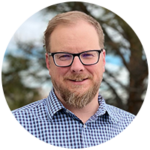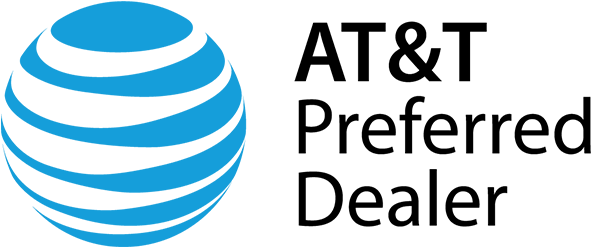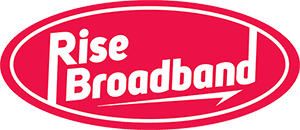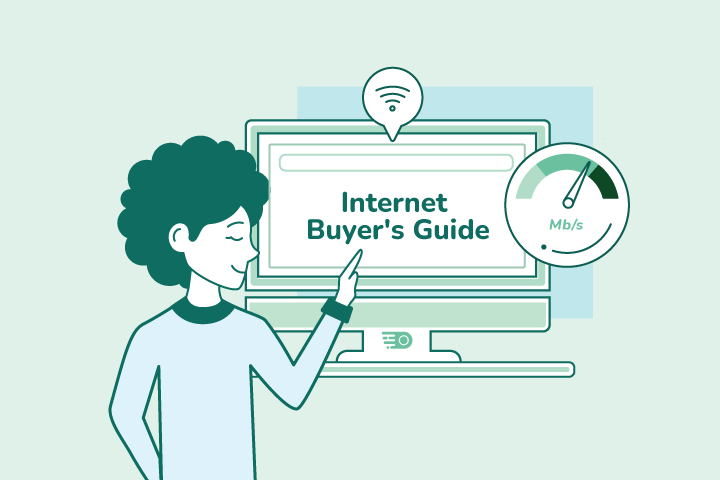What Are the Best Internet Alternatives to DSL?

HighSpeedOptions prides itself on providing honest, quality content. While we may be compensated when you make a purchase through links on our site, all opinions are our own. Here's how we make money.
Table of Contents
There are a few internet options that are better alternatives for DSL (Digital Subscriber Line), but fiber internet is the best. After fiber, cable internet is the next best replacement for DSL, offering high speeds and broad availability.
If DSL is too slow or unavailable in your area, here are five of the most common DSL alternatives:
- Fiber Internet – Fastest speeds and lowest latency, ideal for heavy use.
- Cable Internet – High speeds with wide coverage in urban and suburban areas.
- 5G Home Internet – Wireless broadband that doesn’t require cables.
- Fixed Wireless Internet – Rural-friendly option with competitive speeds when line-of-sight is available.
- Satellite Internet – Available almost anywhere, even in remote areas.
Looking for faster internet? Find the best connection types are available in your area.

Key Takeaways: DSL Internet Alternatives
- DSL is being phased out by many providers in favor of faster, more reliable technologies.
- Fiber internet is the fastest and most future-proof DSL replacement, offering speeds up to 5 Gbps.
- Cable internet delivers high speeds (up to 1000 Mbps) and is widely available, making it a strong second choice.
- 5G home internet offers wireless broadband without the need for cables and is expanding quickly in urban/suburban areas.
- Fixed wireless is a good rural alternative if you have line-of-sight to a provider’s tower, with speeds up to 1000 Mbps.
- Satellite internet is available almost anywhere but has higher latency and is generally slower than other options.
- The best choice depends on your location, budget, and speed needs—use the comparison chart to weigh pros and cons.
DSL is still a viable option in many areas. As the first broadband internet connection, it ushered in continuous, always-on access and replaced the slow 56 Kbps dial-up era. However, many providers now consider DSL a legacy technology and are phasing it out in favor of faster connections—making this the perfect time to explore your options.
If you’re searching for internet in your area and have alternatives to DSL, consider their features before making any decisions. You may find faster speeds, lower costs, and better reliability than DSL. Here’s a look at several DSL internet alternatives that provide reliable and stable connections now and for the future.
Fiber Internet
Fiber internet is by far the fastest replacement for DSL of any internet service. It’s a key focus for many ground-based internet providers as they plan for sustained growth.
Fiber internet relies on fiber-optic technology that transmits data as light signals between two points. In contrast, DSL and cable internet send data as electrical impulses over copper networks. It is the future of land-based internet, as it provides massive bandwidth and incredibly fast speeds up to 5 Gbps and very low internet latency (signal delay).
Currently, fiber is most often available in densely populated areas, where providers can serve the greatest number of users while expanding infrastructure. But given fiber internet’s bandwidth and speed capabilities, providers are deploying fiber networks in more areas. In short, fiber will become more available over the next several years.
Pros of Fiber Internet
Fiber is the fastest land-based internet service available
Providers continue to invest in and expand their fiber networks
Things to Consider
While it is expanding, fiber is not widely available outside of densely populated areas
It can be expensive, especially for top speeds
Top Fiber Providers
- Fiber & DSL provider
- WiFi router included
- Unlimited data included
- Simplified pricing
- Unlimited data included
- No annual contract required
Cable Internet
Cable internet is another high-speed alternative and one of the most widely available internet services in the United States. Similar to DSL, cable internet transmits data over copper coaxial cables – the same cable over which cable TV is distributed. If you have access to cable TV, you probably have access to cable internet.
While it doesn’t have the same speed potential as fiber, cable internet is capable of reaching speeds over 1000 Mbps. This is plenty of speed to support working from home, streaming, online gaming, and a “smart” home. Top speeds are dependent upon the provider and your location.
Pros of Cable Internet
One of the most accessible internet services
Capable of high speeds and low latency
An excellent alternative to fiber, if fiber is not available in your area
Things to Consider
Because it is a shared service, speeds can drop during periods of heavy traffic
Cable internet service can be more expensive than other services
Top Cable Providers
- Same-day installations
- 8+ million free WiFi hotspots
- Unlimited data available
- Contract buyouts up to $500
- Free access to WiFi hotspots
- Nationwide availability
Satellite Internet
Satellite internet is the most accessible type of service. If you have an unobstructed view of the sky, satellite internet is available to you. For this reason, satellite internet is ideal for those in remote and rural locations. In some places, it is the only internet option.
Though it is the most widely available service, it is also the slowest and laggiest. It relies on line of sight from your satellite dish to a satellite, or group of satellites, orbiting the earth, making it prone to weather disturbances and other obstructions. Download speeds can reach about 100 Mbps, and upload speeds can be as low as 3 Mbps. However, Starlink delivers speeds up to 200 Mbps, but it is the most expensive satellite internet option.
Pros of Satellite Internet
99% availability coast-to-coast
Provides access to broadband internet in areas commonly without service
Things to Consider
One of the slowest, high-latency internet connections
Service can be affected by severe weather and visual obstructions
Top Satellite Providers
- Fast satellite internet
- Ideal for rural areas
- Up to 3x faster than DSL*
5G Internet
Fifth-generation internet technology is the latest evolution of cellular data networks, set to replace LTE, 4G, and 3G in the coming years. 5G is a wireless technology with several layers in its spectrum that can provide speeds as high as 10 Gbps. While we won’t see 10 Gbps publicly available for some time, 5G provides stable speeds to consumers hovering around 100 Mbps and higher.
5G internet reception and speeds vary depending on location. If it is available in your area, it is a viable solution for broadband internet access. There are only a couple of providers offering in-home 5G internet, but we expect that to change as this relatively new technology continues to advance.
Pros of 5G Internet
A high-speed internet connection with a promising future of wider availability and increased speeds
5G-capable devices are readily available
Things to Consider
For now, only a few providers are offering in-home 5G internet
Some materials can block or interfere with signal strength
Top 5G Providers
- Fast symmetrical speeds
- Fiber-optics network
- No annual contracts
Fixed Wireless Internet
Similar in function to satellite internet, fixed wireless internet operates by line-of-sight from a transceiver on your property to a provider’s tower rather than to a satellite orbiting the earth. Fixed wireless has speeds that compete with and surpass those of DSL internet; however, a direct line of sight is mandatory for fixed wireless internet.
If you live in a rural area, fixed wireless internet offers an alternative to satellite internet. Once line of sight is established, its signals are capable of traveling long distances (~10 miles). One advantage fixed wireless has over satellite internet is that it is less likely to be disrupted by inclement weather. Fixed wireless is also great in densely populated urban areas and apartment buildings.
Pros of Fixed Wireless Internet
It provides speeds up to 1000 Mbps and is less expensive than satellite internet.
Fixed wireless internet is a great solution for customers in country settings and rural areas
Things to Consider
Connectivity and stability require a direct line of sight between your receiver and the tower.
It currently has limited availability.
Top Fixed Wireless Internet Providers
Quick Comparison of DSL Alternatives
| Connection Type | Typical Speeds | Availability | Pros | Things to Consider |
| Fiber internet | Up to 5 Gbps | Densely populated areas; expanding infrastructure | Fastest land-based internet, low latency, future-proof, highly reliable | Limited rural availability; can be expensive, especially at top speeds |
| Cable Internet | Up to 1000 Mbps | Widely available in urban/suburban areas | High speeds, reliable performance, often bundled with TV | Speeds can drop during peak usage; may be pricier than other services |
| 5G Home Internet | 100 Mbps and higher | Expanding in urban/suburban areas | No wired connection needed, easy installation, potential for higher speeds over time | Limited providers currently; performance varies by coverage and signal interference |
| Fixed Wireless Internet | 25 – 1000 Mbps | Rural/remote areas with tower line-of-sight | Competitive speeds for rural areas, less weather impact than satellite | Requires direct line-of-sight; limited availability based on tower proximity |
| Satellite Internet | 25 – 100 Mbps (Starlink up to 200 Mbps) | Nationwide, including remote areas | Available almost anywhere, essential for hard-to-reach locations | Higher latency; weather interference; possible data caps; generally slower than others |
| Connection Type | Fiber internet |
| Typical Speeds | Up to 5 Gbps |
| Availability | Densely populated areas; expanding infrastructure |
| Pros | Fastest land-based internet, low latency, future-proof, highly reliable |
| Things to Consider | Limited rural availability; can be expensive, especially at top speeds |
| Connection Type | Cable Internet |
| Typical Speeds | Up to 1000 Mbps |
| Availability | Widely available in urban/suburban areas |
| Pros | High speeds, reliable performance, often bundled with TV |
| Things to Consider | Speeds can drop during peak usage; may be pricier than other services |
| Connection Type | 5G Home Internet |
| Typical Speeds | 100 Mbps and higher |
| Availability | Expanding in urban/suburban areas |
| Pros | No wired connection needed, easy installation, potential for higher speeds over time |
| Things to Consider | Limited providers currently; performance varies by coverage and signal interference |
| Connection Type | Fixed Wireless Internet |
| Typical Speeds | 25 â 1000 Mbps |
| Availability | Rural/remote areas with tower line-of-sight |
| Pros | Competitive speeds for rural areas, less weather impact than satellite |
| Things to Consider | Requires direct line-of-sight; limited availability based on tower proximity |
| Connection Type | Satellite Internet |
| Typical Speeds | 25 â 100 Mbps (Starlink up to 200 Mbps) |
| Availability | Nationwide, including remote areas |
| Pros | Available almost anywhere, essential for hard-to-reach locations |
| Things to Consider | Higher latency; weather interference; possible data caps; generally slower than others |
Which DSL Alternative Is Right for You?
While DSL once served as a reliable step from dial-up to broadband internet, there are high-speed alternatives. Match your situation to the best option:
- If you want the fastest speeds available, choose fiber internet if available.
- If you want high speeds and wide availability, choose cable internet.
- If you have no wired connection but good mobile coverage, choose 5G home internet.
- If you live in a rural area with tower line-of-sight, choose fixed wireless internet.
- If no other internet options are available, choose satellite internet.
- If deciding between DSL and satellite, then compare speeds, latency, and price—pick the better value for your needs.
The best choice for you depends on your location, budget, and internet lifestyle. Use the comparison chart and quick decision guide above to evaluate each option’s features and trade-offs. Then, you can select a service that meets your current needs and anticipates future demands.
Frequently Asked Questions: Internet Alternatives for DSL
If DSL is unavailable or too slow in your area, other internet options include fiber, cable, 5G home internet, fixed wireless, and satellite. The right pick depends on your location, budget, and speed needs.
Yes. Most alternative internet options—especially fiber internet and cable internet—are significantly faster than DSL for internet access. Fiber can reach up to 5 Gbps; cable can exceed 1000 Mbps in many areas.
Fixed wireless internet and satellite are the most common alternative choices for rural internet. Fixed wireless can be fast, but it requires a clear line-of-sight to a tower; satellite is available almost anywhere with an unobstructed view of the sky.
Many providers are sunsetting or limiting DSL in favor of faster options like fiber and fixed wireless. Availability varies by region, but DSL is less competitive among newer networks.
Compare speed, availability, price, data caps, reliability, and internet latency in your area. Use the comparison chart to see how fiber, cable, 5G, fixed wireless, and satellite stack up.
It depends on local providers. Entry-level cable plans are often the most affordable in cities/suburbs; in rural areas, fixed wireless may cost less than satellite internet (though speeds and reliability can vary). Some providers offer attractive introductory pricing for fiber internet.
Often yes, if your DSL term has ended. If you’re under contract, check for early termination fees. Some providers offer contract buyouts or credits to offset the cost of switching.
Find providers in your area

Table of Contents














